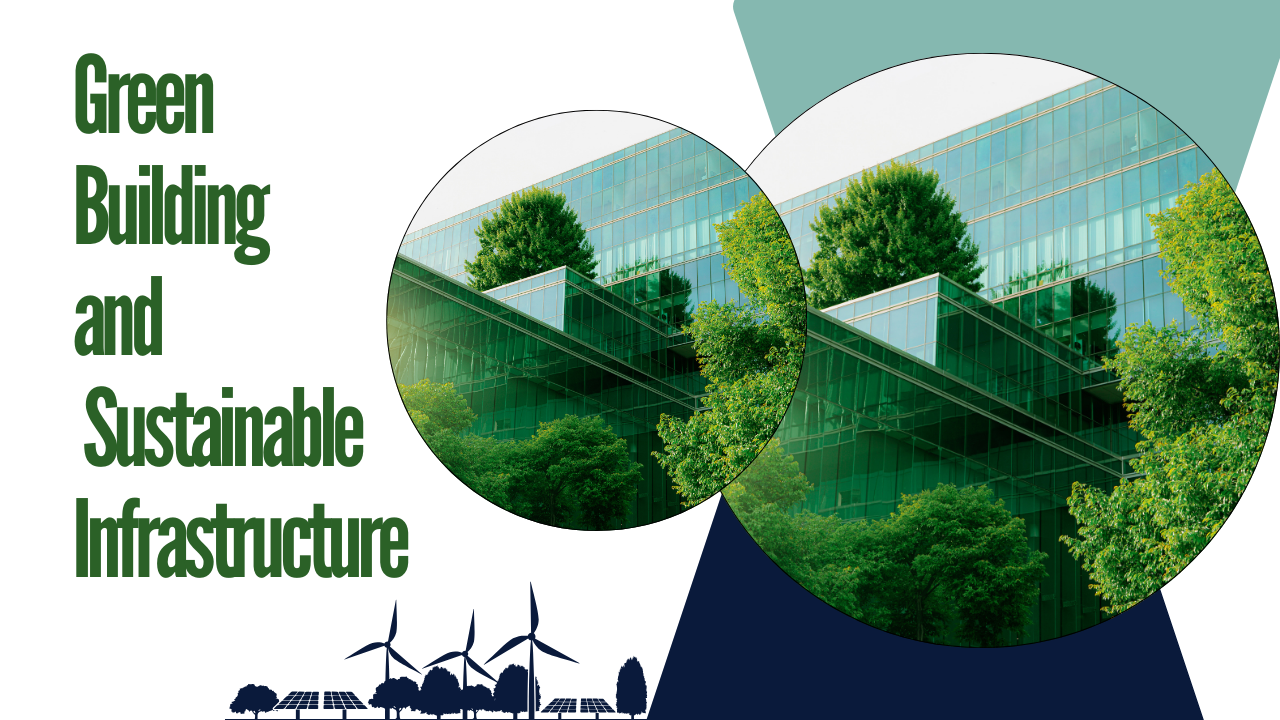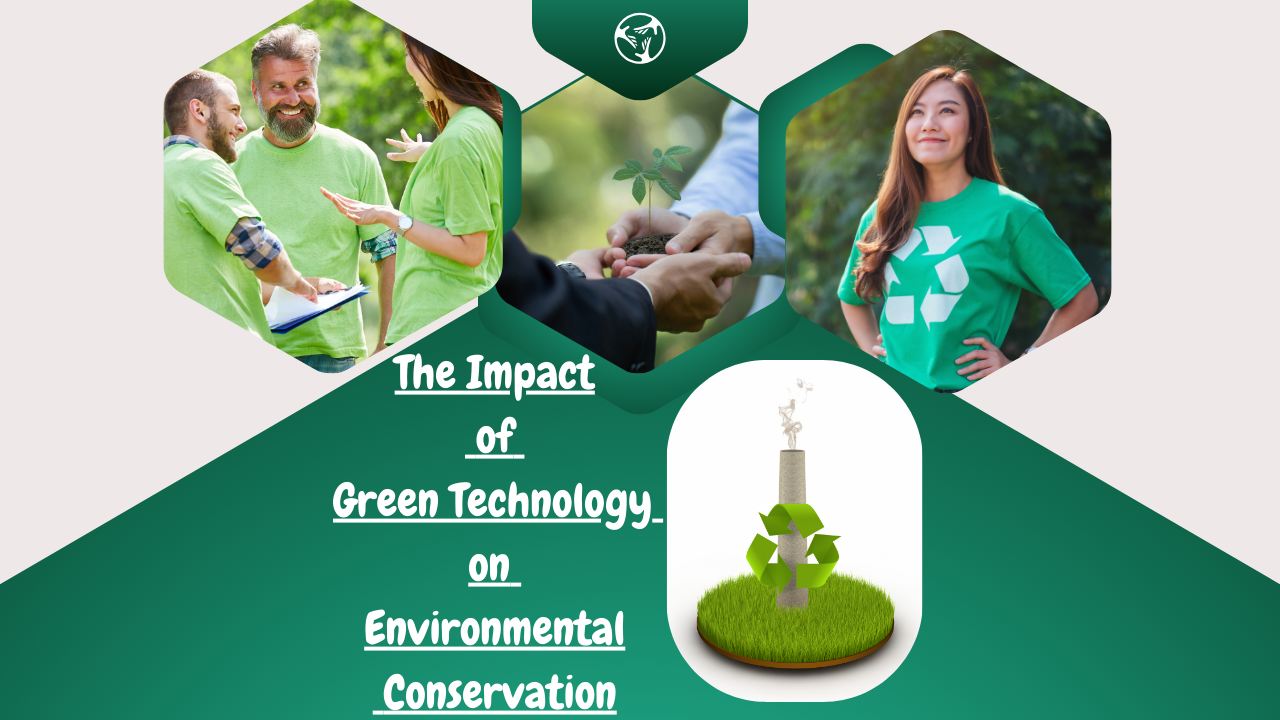In the face of escalating environmental challenges, such as climate change, biodiversity loss, and resource depletion, green technology has emerged as a vital player in promoting sustainability and environmental conservation. Green technology refers to innovative solutions that minimize environmental impact while maximizing resource efficiency. This article explores the profound impact of green technology on environmental conservation, examining its applications across various sectors, the benefits it offers, and the challenges it faces.
Understanding Green Technology
Green technology encompasses a wide range of practices, processes, and products designed to mitigate environmental damage. This includes renewable energy sources like solar and wind power, energy-efficient appliances, sustainable agricultural practices, waste management solutions, and eco-friendly building materials. By leveraging advancements in technology and innovation, green technology aims to reduce carbon emissions, conserve natural resources, and promote sustainable practices that protect the environment.
Renewable Energy and Its Role in Conservation
Solar Power
One of the most significant advancements in green technology is the development of solar energy. Solar panels convert sunlight into electricity, reducing reliance on fossil fuels and lowering greenhouse gas emissions. By harnessing this abundant energy source, households and businesses can decrease their carbon footprints and contribute to the conservation of the environment. Countries around the world are investing in solar infrastructure, leading to a notable increase in energy independence and a decrease in air pollution.
Wind Energy
Wind energy is another critical component of renewable energy. Turbines generate electricity without emitting harmful pollutants, making them a clean alternative to fossil fuels. The expansion of wind farms globally has not only provided a sustainable energy source but also contributed to habitat preservation. By reducing the need for coal and natural gas, wind energy helps decrease the environmental degradation associated with fossil fuel extraction and combustion.
Hydropower and Geothermal Energy
These components also play crucial roles in conservation efforts. Hydropower harnesses the energy of flowing water to generate electricity, while geothermal energy utilizes the Earth’s internal heat. Both methods significantly reduce greenhouse gas emissions and offer sustainable alternatives to traditional energy sources. By investing in these technologies, countries can achieve energy security while minimizing their environmental impact.
Sustainable Agriculture Practices
Precision Agriculture
Green technology is transforming the agricultural sector through sustainable practices that enhance efficiency and reduce environmental harm. Precision agriculture, for instance, uses data analytics, sensors, and GPS technology to optimize crop yields while minimizing resource use. Farmers can precisely monitor soil conditions, water usage, and nutrient levels, leading to reduced waste and improved sustainability.
Organic Farming
Organic farming is another critical aspect of green technology in agriculture. By eliminating synthetic pesticides and fertilizers, organic farming protects biodiversity and improves soil health. The increased demand for organic produce encourages farmers to adopt sustainable practices, contributing to the conservation of ecosystems and natural resources.
Agroforestry
Agroforestry, the integration of trees and shrubs into agricultural landscapes, is a sustainable practice that enhances biodiversity, improves soil quality, and sequesters carbon. This method not only provides farmers with additional income sources but also contributes to environmental conservation by promoting ecosystem health and resilience.
Waste Management Innovations
Recycling Technologies
Innovative recycling technologies play a crucial role in reducing waste and conserving natural resources. Advanced sorting systems, automated processes, and materials recovery facilities enhance recycling efficiency, allowing for higher recovery rates of valuable materials. By recycling materials like plastics, metals, and paper, we can significantly reduce the amount of waste sent to landfills and conserve the resources required for new products.
Waste-to-Energy Systems
Waste-to-energy technologies convert non-recyclable waste materials into usable energy. This process not only reduces landfill waste but also generates electricity and heat, contributing to renewable energy production. By diverting waste from landfills and reducing reliance on fossil fuels, waste-to-energy systems support environmental conservation efforts.
Biodegradable Materials
The development of biodegradable materials represents a significant advancement in waste management. These materials break down naturally, reducing the long-lasting environmental impact of traditional plastics. As industries adopt biodegradable alternatives, the pressure on landfills decreases, and ecosystems are better protected from pollution.
Water Conservation Technologies
Smart Irrigation Systems
Water conservation is essential for environmental sustainability, and green technology is revolutionizing how we manage water resources. Smart irrigation systems utilize sensors and data analytics to optimize water usage in agriculture and landscaping. By delivering precise amounts of water based on real-time conditions, these systems minimize water waste and ensure that crops receive the necessary hydration without overuse.
Water Filtration and Purification
Advanced water filtration and purification technologies are crucial for conserving water resources and ensuring clean water access. Innovations such as membrane filtration, UV treatment, and desalination processes provide sustainable solutions for water scarcity. By improving water quality and availability, these technologies contribute to the conservation of aquatic ecosystems and public health.
Rainwater Harvesting
Rainwater harvesting systems capture and store rainwater for various uses, reducing dependence on municipal water supplies. This sustainable practice not only conserves water resources but also helps manage stormwater runoff, mitigating flooding and protecting local waterways from pollution.
Green Building and Sustainable Infrastructure
Energy-Efficient Design
Green technology has significantly impacted the construction industry by promoting energy-efficient building designs. Techniques such as passive solar design, natural ventilation, and high-performance insulation reduce energy consumption and enhance occupant comfort. By minimizing energy use, green buildings contribute to lower greenhouse gas emissions and foster environmental conservation.
Sustainable Materials
The use of sustainable materials in construction—such as recycled steel, bamboo, and reclaimed wood—reduces the environmental impact of building projects. These materials often have a lower carbon footprint compared to traditional options and promote resource conservation by utilizing existing materials.
Green Infrastructure
Green infrastructure initiatives, such as green roofs and permeable pavement, help manage stormwater, reduce urban heat, and improve air quality. By integrating nature into urban environments, these technologies enhance biodiversity and create healthier ecosystems.
Transportation Innovations
Electric Vehicles (EVs)
The transportation sector is a significant contributor to greenhouse gas emissions, but green technology is driving the shift toward cleaner alternatives. Electric vehicles (EVs) produce zero tailpipe emissions, reducing air pollution and dependence on fossil fuels. The widespread adoption of EVs, supported by advancements in battery technology and charging infrastructure, is crucial for environmental conservation.
Public Transportation Enhancements
Improvements in public transportation systems, such as electric buses and light rail, contribute to reduced congestion and lower emissions. By encouraging the use of public transit, cities can decrease the environmental impact of individual car travel, promoting more sustainable urban development.
Alternative Fuels
The development of alternative fuels, such as biodiesel, hydrogen, and bioethanol, offers sustainable options for powering vehicles. These fuels can reduce reliance on traditional fossil fuels, decrease greenhouse gas emissions, and promote energy independence.
The Role of Policy and Education
Government Initiatives
Government policies and incentives play a crucial role in promoting the adoption of green technology. Subsidies for renewable energy projects, grants for sustainable agriculture practices, and regulations that encourage recycling and waste reduction are essential for driving change. By supporting green technology initiatives, governments can foster innovation and facilitate environmental conservation efforts.
Public Awareness and Education
Education and public awareness campaigns are vital for encouraging the adoption of green technology. By informing individuals and communities about the benefits of sustainable practices, we can inspire behavioral changes that contribute to environmental conservation. Schools, NGOs, and community organizations play a crucial role in spreading awareness and fostering a culture of sustainability.
Challenges and Barriers
Financial Constraints
Despite its potential, the adoption of green technology faces financial constraints. The initial investment for renewable energy installations, sustainable agriculture practices, and green infrastructure can be high, deterring individuals and businesses from making the transition. Governments and financial institutions must work together to provide funding and incentives to overcome these barriers.
Technological Limitations
While green technology has advanced significantly, certain limitations still exist. For instance, energy storage for renewable sources, like solar and wind, requires further innovation to ensure a reliable energy supply. Addressing these technological challenges is crucial for the long-term success of green initiatives.
Resistance to Change
Cultural and institutional resistance to adopting new technologies can hinder progress. Changing established practices and mindsets requires time, education, and effective communication. Engaging stakeholders and highlighting the benefits of green technology can help overcome these barriers.
The Future of Green Technology in Environmental Conservation
Innovations on the Horizon
The future of green technology holds immense promise for environmental conservation. Emerging technologies, such as artificial intelligence, blockchain, and nanotechnology, have the potential to enhance sustainability efforts across various sectors. For example, AI can optimize resource management and energy consumption, while blockchain can improve transparency in supply chains.
Collaborative Efforts
Collaboration among governments, businesses, and communities will be essential for advancing green technology. By working together, stakeholders can share knowledge, resources, and best practices, fostering innovation and accelerating the adoption of sustainable solutions.
Global Impact
As the world grapples with climate change and environmental degradation, the global impact of green technology will be profound. By investing in sustainable practices and technologies, nations can collectively work toward a more sustainable future, protecting natural resources for generations to come.
Conclusion
The impact of green technology on environmental conservation is significant and far-reaching. From renewable energy and sustainable agriculture to innovative waste management and transportation solutions, green technology is reshaping how we interact with the environment. While challenges remain, the potential benefits of adopting green technologies are immense, paving the way for a more sustainable and resilient future. By embracing these innovations and fostering a culture of sustainability, we can protect our planet and promote conservation efforts that ensure the well-being of future generations.
